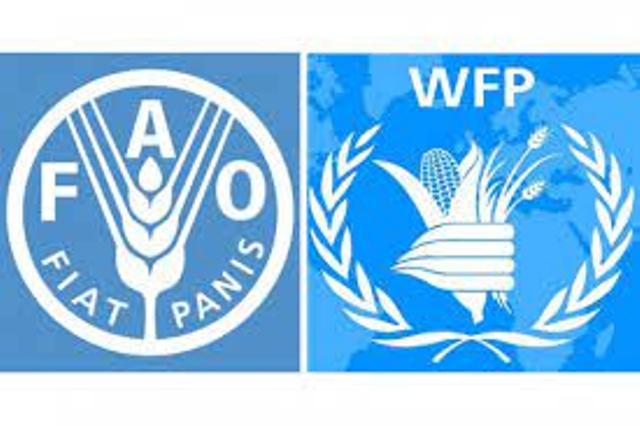A joint report published by the World Food Programme (WFP) and the Food and Agricultural Organisation (FAO) projects over 24.8 million Nigerians to risk acute food insecurity between June and November 2023.
FAO and WFP warn that acute food insecurity is likely to deteriorate further in 18 hunger hotspots – comprising a total 22 countries – during from June to November 2023.
“In Nigeria, acute food insecurity is expected to deteriorate in the outlook period, driven by the multidimensional security crisis, together with weak macroeconomic conditions and multiple natural hazards.
“Over 24.8 million people are projected to be acutely food insecure between June and August 2023, including 1.1 million people in emergency (CH Phase 4). Humanitarian access constraints remain very high, particularly in Borno, Yobe and Adamawa, where at least 31 local government areas remain partially or completely inaccessible.
“The acute food insecurity is likely to deteriorate further in 18 hunger hotspots – comprising a total of 22 countries – during the outlook period from June to November 2023.
“Organised violence and armed conflict continue to constitute key drivers of acute food insecurity in the following hunger hotspots: Central African Republic, eastern Democratic Republic of the Congo, Ethiopia, Haiti, Nigeria, the Sahel (Burkina Faso, Mali), Somalia, South Sudan, Sudan, the Syrian Arab Republic and Yemen.
“Weather extremes, such as heavy rains, tropical storms, cyclones, flooding, drought and increased climate variability, remain significant drivers in some countries and regions,” the report stated.
The WFP-FAO noted that the 18 hunger hotspots, including Nigeria, needed urgent humanitarian action, and two regional clusters comprising a total of 22 countries.
“In the hunger hotspots, parts of the population will likely face a significant deterioration of already high levels of acute food insecurity, putting lives and livelihoods at risk.
“Targeted humanitarian action is urgently needed to save lives and livelihoods in all 18 hunger hotspots. In eight of these – Afghanistan, Haiti, Nigeria, the Sahel region (Burkina Faso and Mali), Somalia, South Sudan, Sudan and Yemen – humanitarian action is critical to prevent starvation and death,” the report said.
It added: “Afghanistan, Nigeria, Somalia, South Sudan and Yemen remain at the highest concern level. Haiti, the Sahel (Burkina Faso and Mali) and the Sudan have been elevated to the highest concern levels; this is due to severe movement restrictions of people and goods in Haiti, as well as in Burkina Faso and Mali, and the recent eruption of conflict in the Sudan.
“Pakistan, the Central African Republic, Ethiopia, Kenya, the Democratic Republic of the Congo and the Syrian Arab Republic are hotspots with very high concern, and the warning is also extended to Myanmar in this edition. All these hotspots have a high number of people facing critical acute food insecurity, coupled with worsening drivers that are expected to further intensify life‐threatening conditions in the coming months.
“Lebanon, El Salvador and Nicaragua have been added to the list of hunger hotspot countries, since the September 2022 edition. Malawi, Guatemala and Honduras remain hunger hotspot countries.”

























































